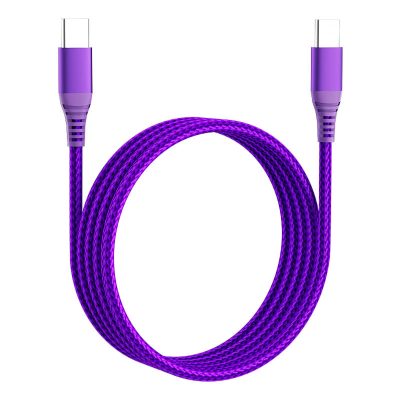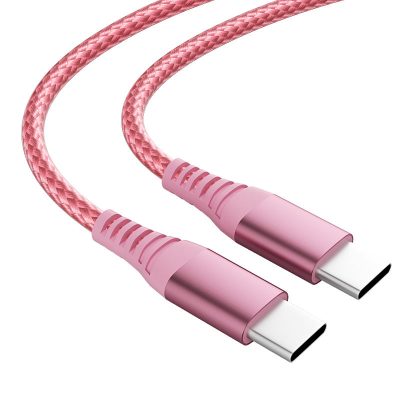Choosing the right USB C to C cable for your needs involves considering several factors such as data transfer speeds, power delivery, build quality, length, and certification. Here’s a comprehensive guide to help you make the best choice:
1. Determine Your Usage
Data Transfer Needs:
- High-Speed Transfers: If you need fast data transfers for activities like video editing or transferring large files, opt for cables that support USB 3.1 Gen 2 or USB 3.2, which offer speeds up to 10 Gbps and 20 Gbps, respectively.
- General Use: For everyday tasks like charging or basic data transfers, USB 2.0 (480 Mbps) or USB 3.1 Gen 1 (5 Gbps) cables are sufficient.
Charging Requirements:
- High-Power Devices: For laptops and other high-power devices, choose cables that support up to 100W power delivery.
- Mobile Devices: For smartphones and tablets, cables supporting 18W to 60W power delivery are usually adequate.
2. Check Compatibility
Device Ports:
- Ensure the cable is compatible with the USB C ports on your devices. USB C is becoming the standard, but it’s essential to check if your devices support the specific USB C version and power delivery requirements.
Power Delivery (PD):
- Match the cable’s power delivery capabilities with your device’s requirements. Over-specifying is generally fine but under-specifying can lead to slow charging or no charging at all.
3. Evaluate Build Quality
Durability:
- Look for cables with reinforced connectors and durable materials such as braided nylon. These features enhance the cable’s lifespan and resistance to wear and tear.
Flexibility:
- A flexible yet sturdy cable is easier to manage and less likely to get damaged. Consider cables with a soft outer jacket that can bend without breaking.
4. Consider Length
Portable Use:
- For portable use and travel, shorter cables (3 feet or less) are more convenient and easier to carry.
Stationary Use:
- For home or office setups, longer cables (6 feet or more) provide greater flexibility in positioning your devices.
5. Look for Certification
USB-IF Certification:
- Certified cables meet strict standards for performance and safety. Look for USB-IF (USB Implementers Forum) certification to ensure the cable’s quality and reliability.
6. Additional Features
E-Marker Chips:
- Some cables come with e-marker chips that help negotiate the power delivery between devices, ensuring safe and efficient charging.
Warranty:
- A warranty can be a good indicator of the manufacturer’s confidence in the product’s durability. Look for cables with a warranty for added peace of mind.
Recommended USB C to C Cables
Here are some recommended USB C to C cables based on different needs:
For High-Speed Data Transfer and Charging:
- Anker PowerLine III USB-C to USB-C Cable
- Features: Supports up to 100W Power Delivery, USB 3.1 Gen 1 (5 Gbps).
- Build Quality: Ultra-durable with reinforced connectors.
- Length: 3 feet and 6 feet.
- Warranty: Lifetime warranty.
- Belkin USB-C to USB-C Cable
- Features: USB 3.1 Gen 2 (10 Gbps), up to 100W Power Delivery.
- Build Quality: Robust braided design.
- Length: Multiple lengths, including 3 feet and 6 feet.
- Certification: USB-IF certified.
For General Use:
- AmazonBasics USB Type-C to Type-C 3.1 Gen 2 Cable
- Features: USB 3.1 Gen 2 (10 Gbps), up to 100W Power Delivery.
- Build Quality: Flexible yet sturdy design.
- Length: 3 feet and 6 feet.
- Certification: USB-IF certified.
- JSAUX USB-C to USB-C Cable
- Features: USB 2.0 (480 Mbps), up to 60W Power Delivery.
- Build Quality: Nylon-braided design.
- Length: 6.6 feet and 10 feet.
- Additional Features: Affordable and reliable.
Conclusion
Choosing the right USB C to C cable involves understanding your specific needs for data transfer speed, charging power, and build quality. By considering these factors and checking for compatibility and certification, you can select a cable that will provide reliable performance and longevity for your devices. Whether for high-speed data transfer, fast charging, or general use, the right cable will enhance your overall connectivity experience.







